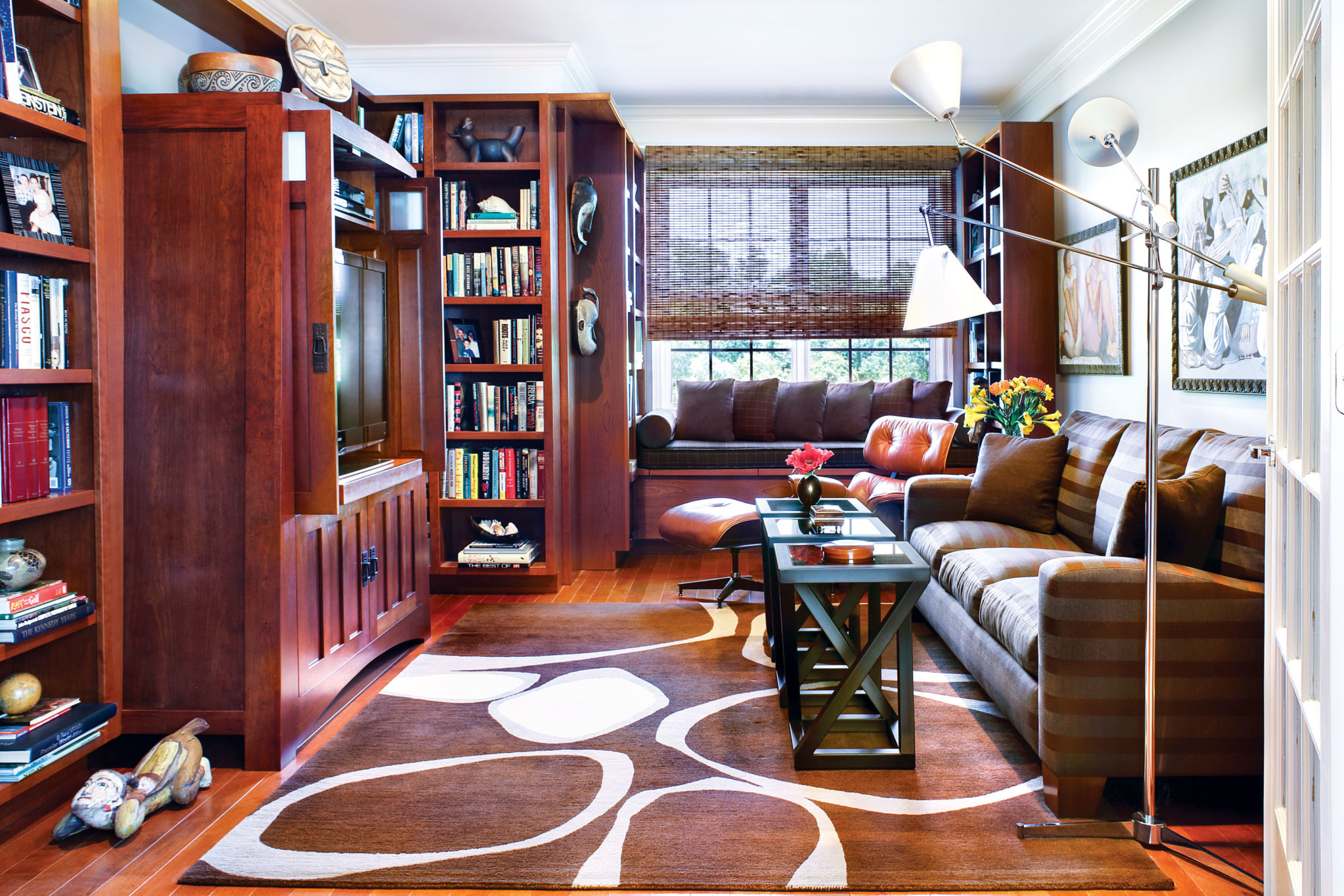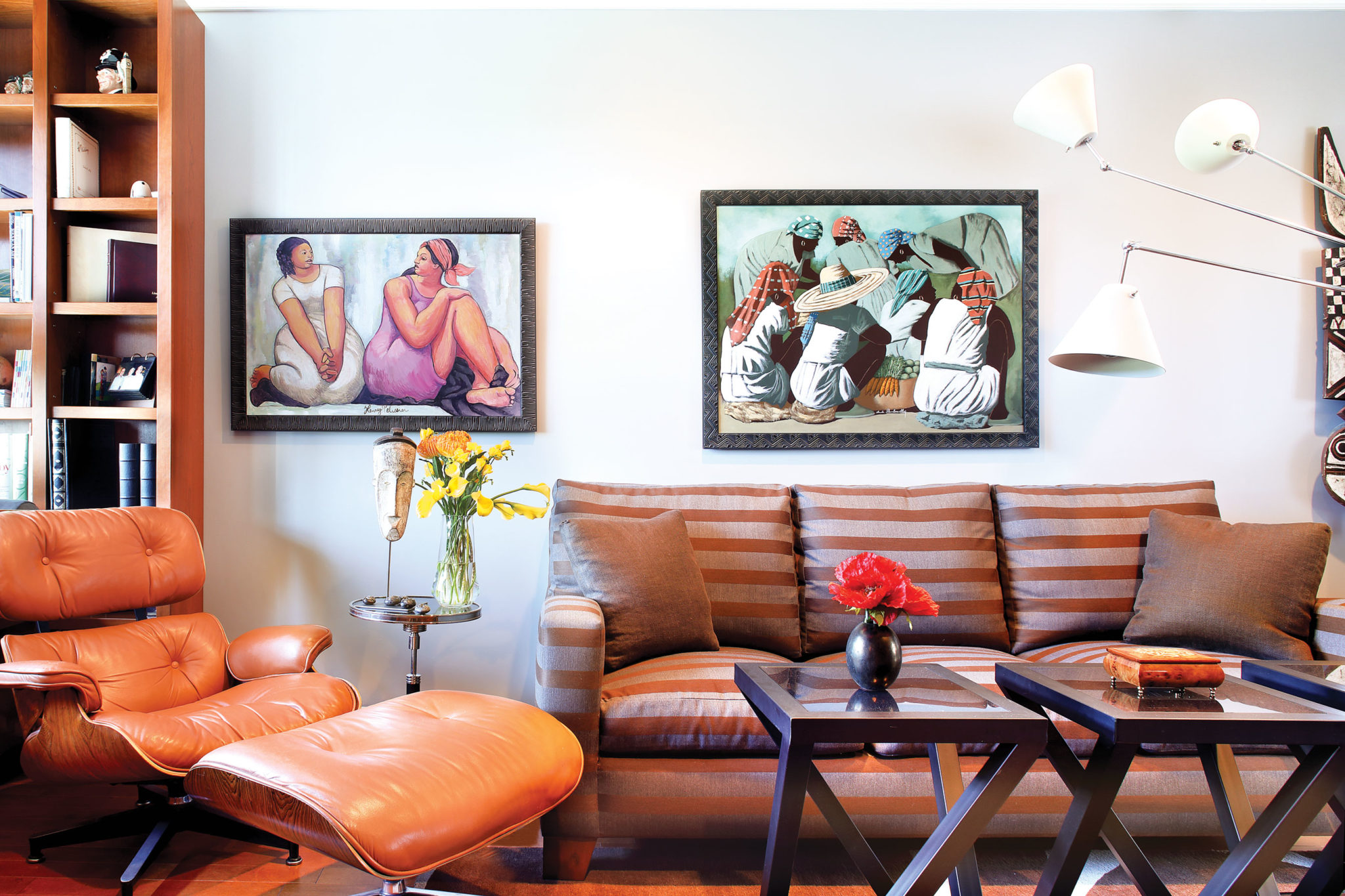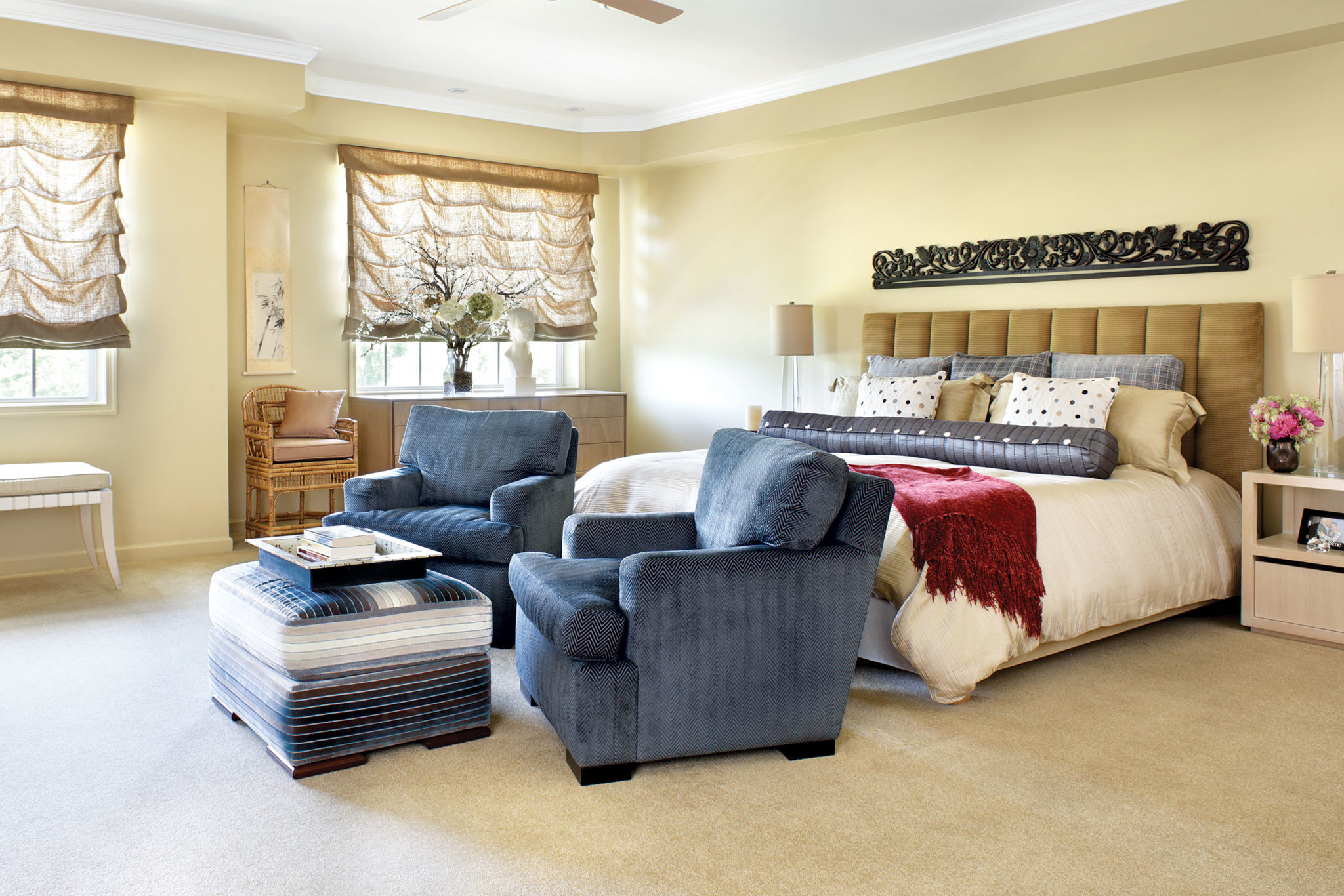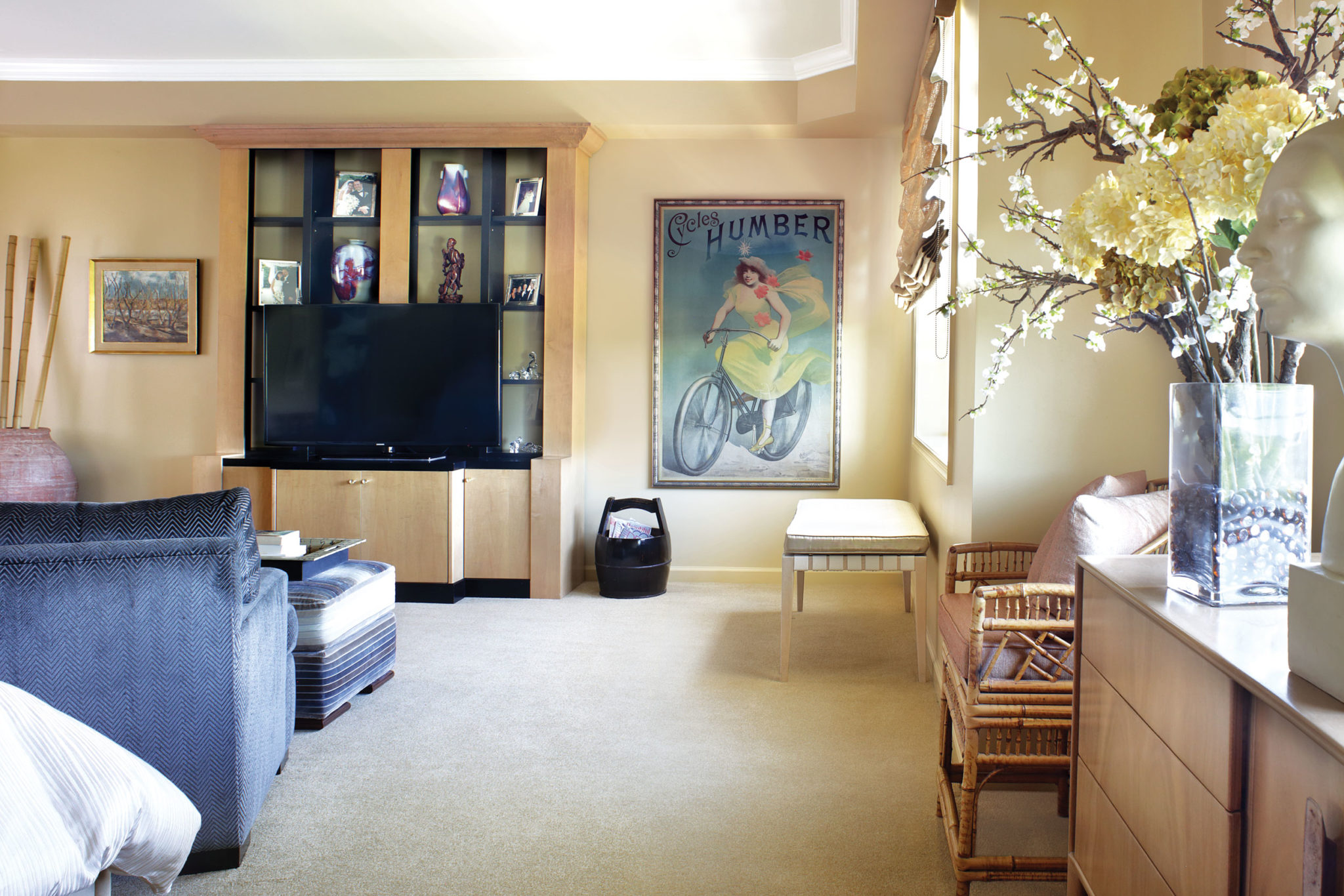Downsizing in Wanaque
Writer Marirose Krall | Photographer Peter Rymwid | Designer Robyn Schultz, CID, ALLIED ASID | Location Wanaque, NJ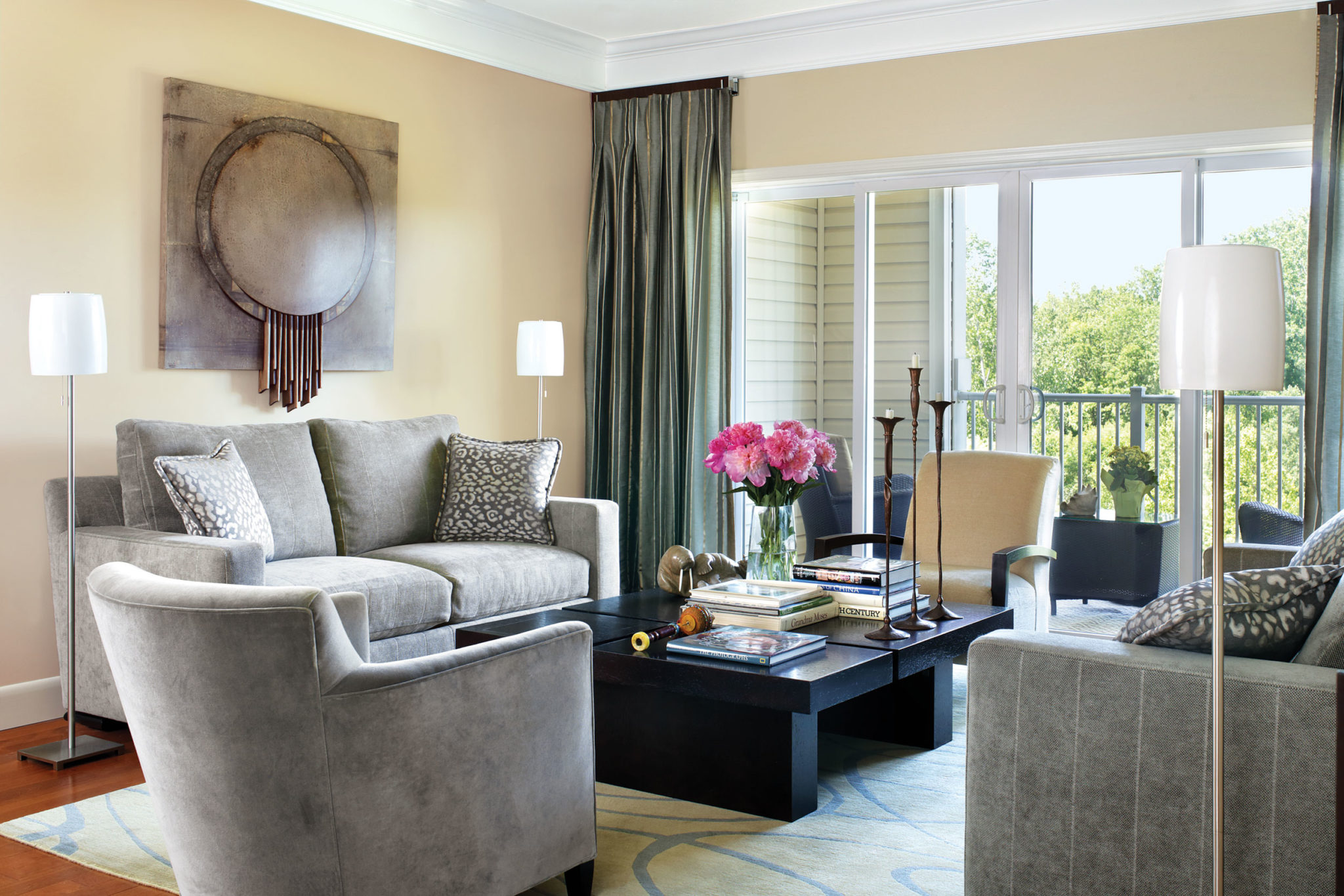
LIVING ROOM | The living room features two loveseats, one of which came from the owners’ former bedroom. A copy was fabricated, and both pieces were upholstered in matching fabric.
In Wanaque, NJ, a condominium’s décor reflects a lifetime of memories
Like many people enjoying their retirement, Linda and Mel Rabin purchased a home in Florida where they could relax in the warm southern winters. Also like many retirees, they chose to sell their large New Jersey home and relocate to a condominium complex in Wanaque, New Jersey where they could spend summers. Though the move required downsizing from 3,000 square feet to 2,000, the new residence was appealing in that it was practically maintenance-free. “They could lock it up, walk away and go to Florida,” says Robin Schultz of Englewood, NJ-based Robin Schultz Interior Design.
The relocation itself, though, wasn’t as simple; it required a bit of planning. “In anticipation of the move, we reviewed each piece of existing furniture,” says Schultz, a state-certified interior designer and allied member of the American Society of Interior Designers. The designer studied the condominium’s floor plan to see exactly what would fit in the new space. Linda Rabin knew she would have to let some of her belongings go. “Of course, downsizing precluded me from taking certain pieces,” she notes. However, she was able “to take some pieces I really love, some bedroom pieces that we acquired in 1960 when we were first married, and others we had acquired over time.”
Those much-loved pieces included an Eames chair and ottoman (particular favorites of Mel, who is now deceased), which coordinate beautifully with the décor in the library/family room. The dining table and chairs also came from the previous home, as did the bed and end tables in the master bedroom.
A loveseat, currently in the condo living room, was originally located in the sitting area of the Rabins’ former master bedroom. Now it’s part of a pair—the other was purchased for the move and the two were reupholstered to match—in the cozy living room.
While finding room for furniture in smaller spaces may have been an issue in many rooms, the exact opposite was the case in the master bedroom. “The bedroom is enormous,” Rabin says of the 20-by-20-foot space. “So I had plenty of space to put furniture there.”
That’s why the master bedroom was an ideal spot for a cabinet Schultz had designed for a specific niche in the Rabins’ previous home. At the time, the couple asked Schultz to keep in mind that, at some point, they might want to use it elsewhere. So, Schultz says, “we needed to make end panels so that [in the future] they could use it as a freestanding piece.” The extra pieces went into storage for a while; then were reconstructed in the condo.
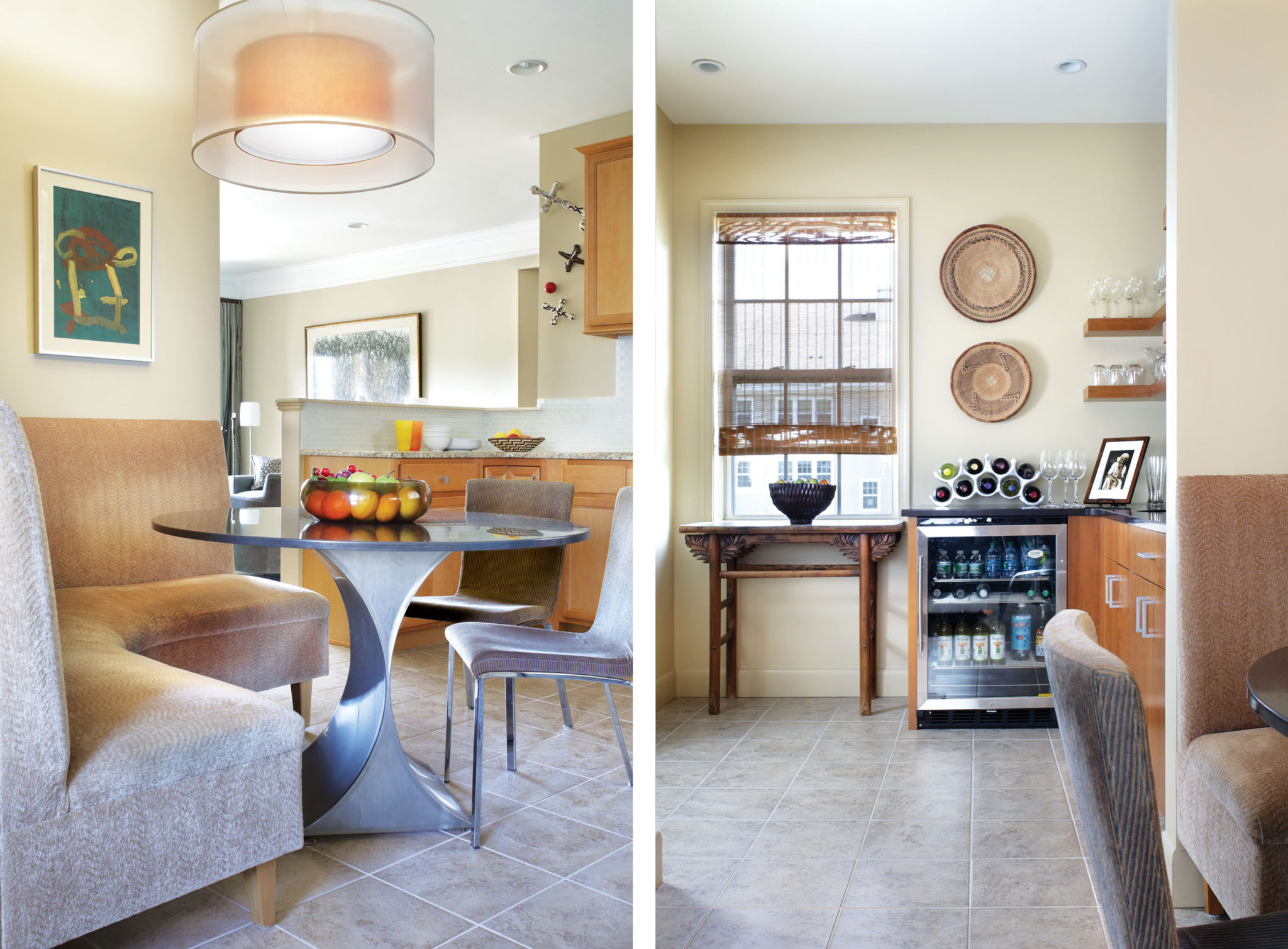
BREAKFAST TABLE | The breakfast table’s steel base is a sleek, modern touch. BEVERAGE CENTER | The beverage center is conveniently located off the kitchen. The baskets on the wall were brought back from an African jaunt. The photograph on the countertop was purchased in Cuba.
The decor in the condominium is an enticing mix of neutral foundations and worldly accents. “We always wanted a quiet, serene, Zen-like retreat feeling,” Rabin notes. “We wanted a place where, when we came home, it was quiet, comfortable and welcoming.”
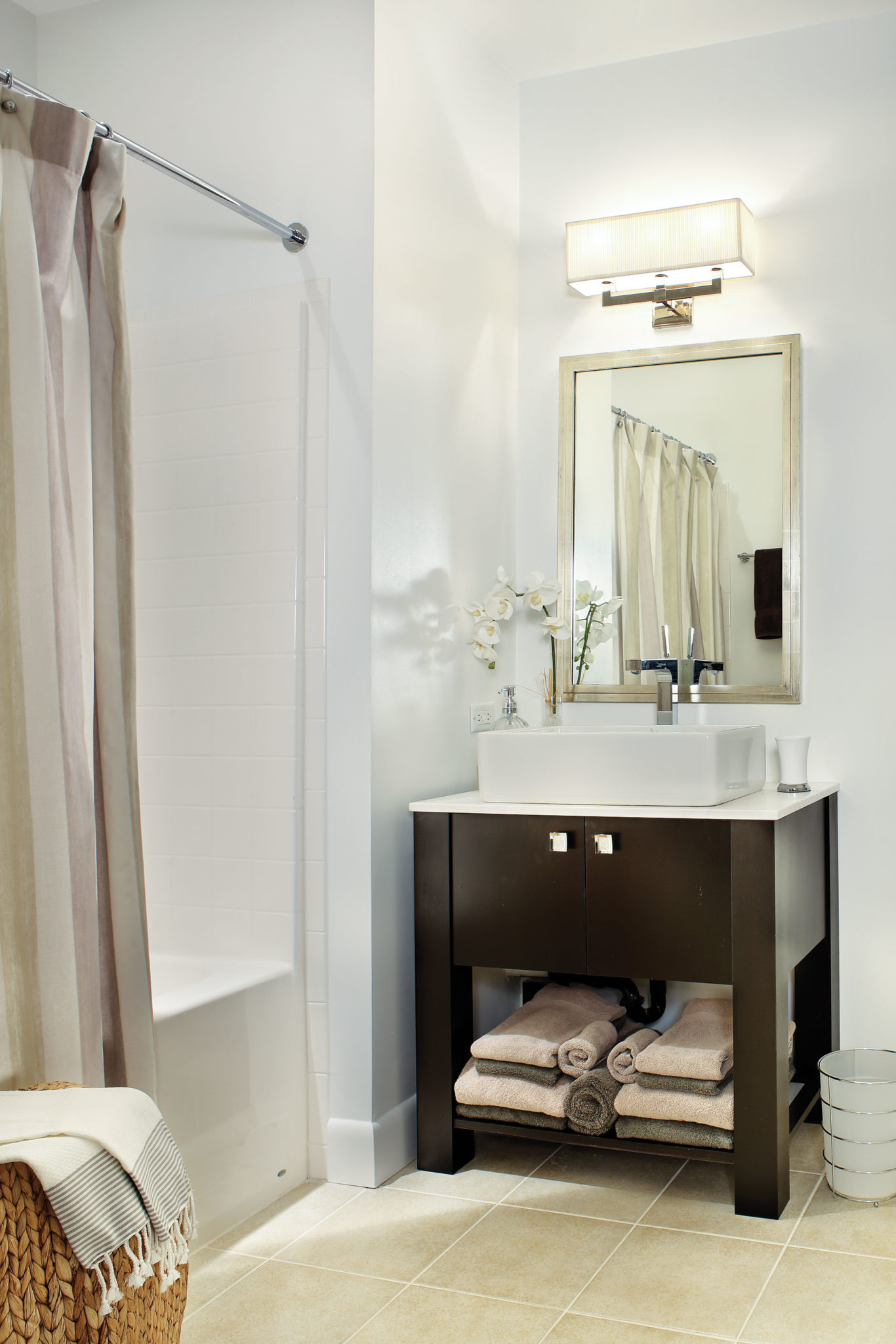
MASTER BATHROOM | Zen simplicity is a hallmark in this space.
Schultz “eliminated the pieces that weren’t compatible with that goal,” such as a Chesterfield sofa from the former living room and a Chinoiserie cabinet from the former master bedroom. The designer says she created a “calm kind of feeling with comfortable upholstered pieces and a fairly monochromatic palette.” Black accents in various forms appear in most of the spaces—the coffee table in the living room, for example, and the vanity in the master bathroom.
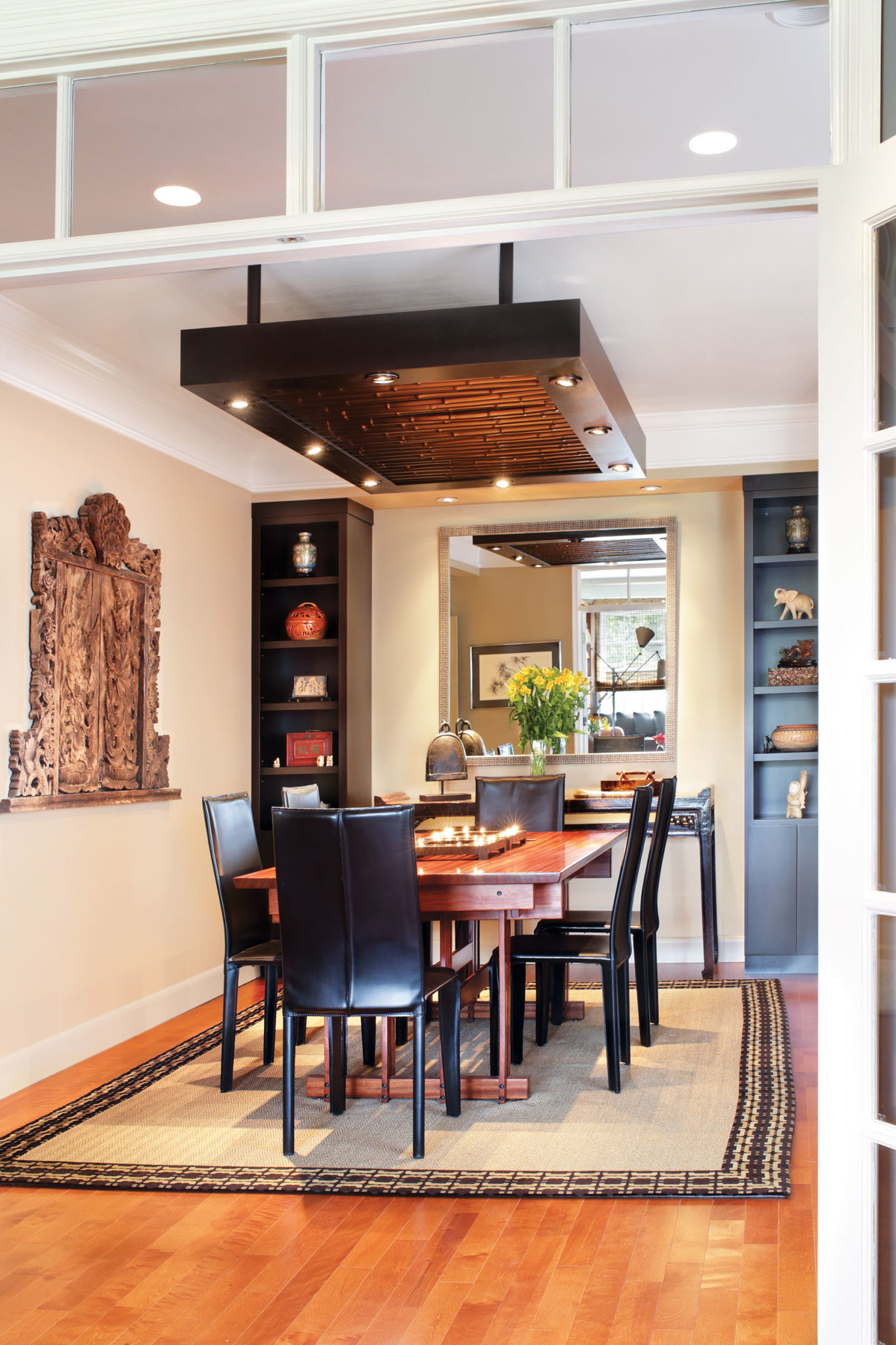
DINING ROOM | The dining room table and chairs were taken from the owners’ previous home. Here, they’re surrounded by Asian-inspired pieces. Schultz says of the light fixture she designed, “The client was adventurous enough to go with it based on my description.”
The “Zen-like” feel is perhaps nowhere more apparent than in the dining room, where Schultz installed a dramatic light fixture she designed featuring bamboo poles. “Everybody loves it,” Rabin says. “It gives the room a great feeling.” An altar table contributes to the look, surrounded by two black cabinets for storage.
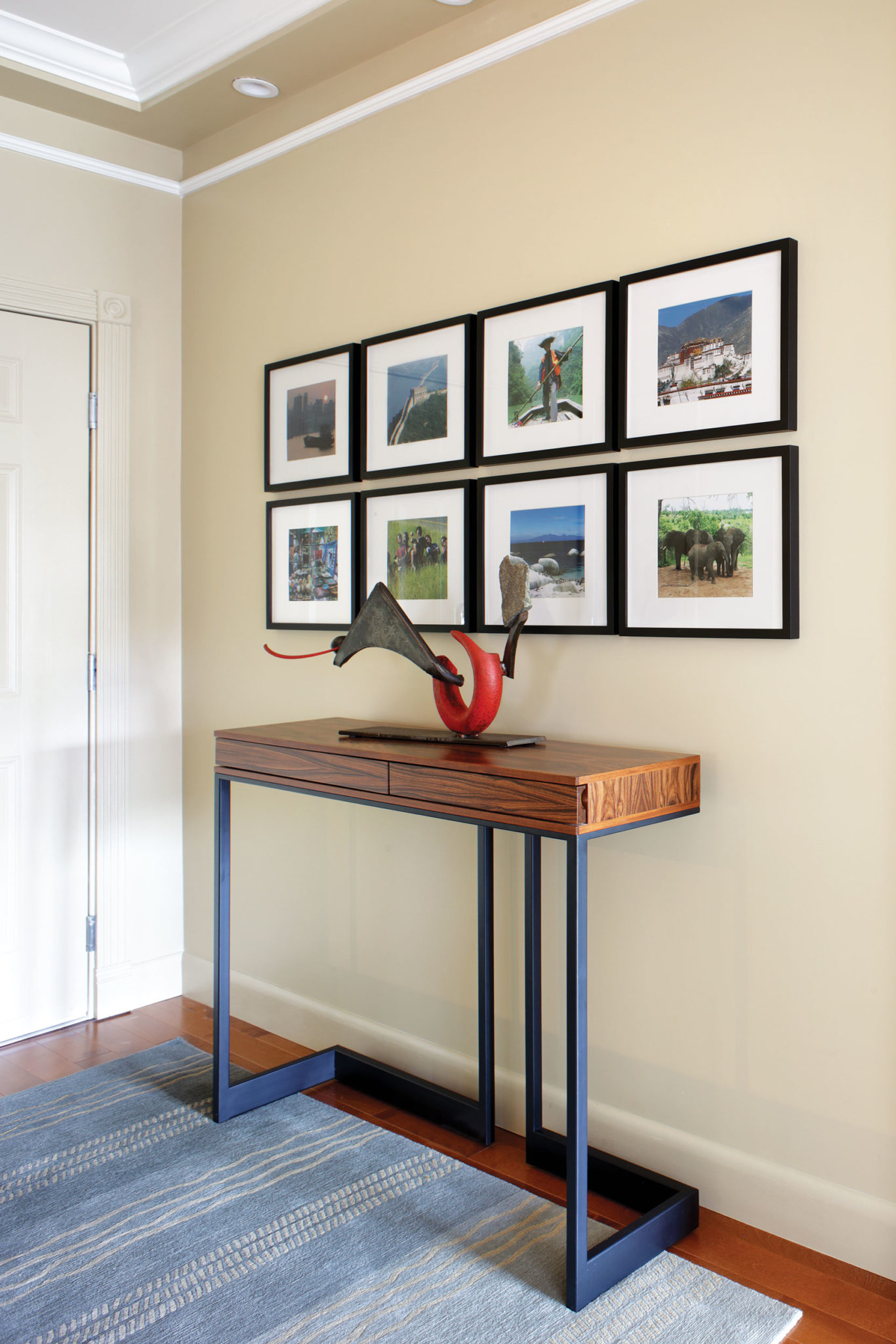
ENTRY | In the entry, a gallery wall of photographs reflects the Rabins’ years of travel. Adirondacks artist John Van Alstine created the sculpture on the console.
The multicultural aspect of the décor is the result of the Rabins’ extensive travels. A collection of photos displayed in the entryway recall various far-flung adventures. African masks adorn the family room. A photo in the beverage center is a souvenir from a trip to Cuba. Other pieces were gallery finds. For Rabin, each one is a precious memory of time spent with her late husband. “All the art pieces we bought were fun,” she says. “We did it together. The poster I have in the bedroom we bought at one of the pier shows in New York City. It was almost falling apart; I remember trying to get it home without doing any damage.”
The Rabins brought home pieces from every corner of the world—and they work together beautifully. “I always like mixing styles,” Rabin says. “We picked up things over the years. We just made them our own.” Rabin is still making memories, now with her grandchildren, who enjoy visiting. “My grandkids love the banquette we made in the kitchen. They feel like they’re in a diner.” It’s not just the kitchen that appeals to family and friends. “Each room has its own function and every room is comfortable, which is what we were looking for,” Rabin says. “Every space is inviting.”

